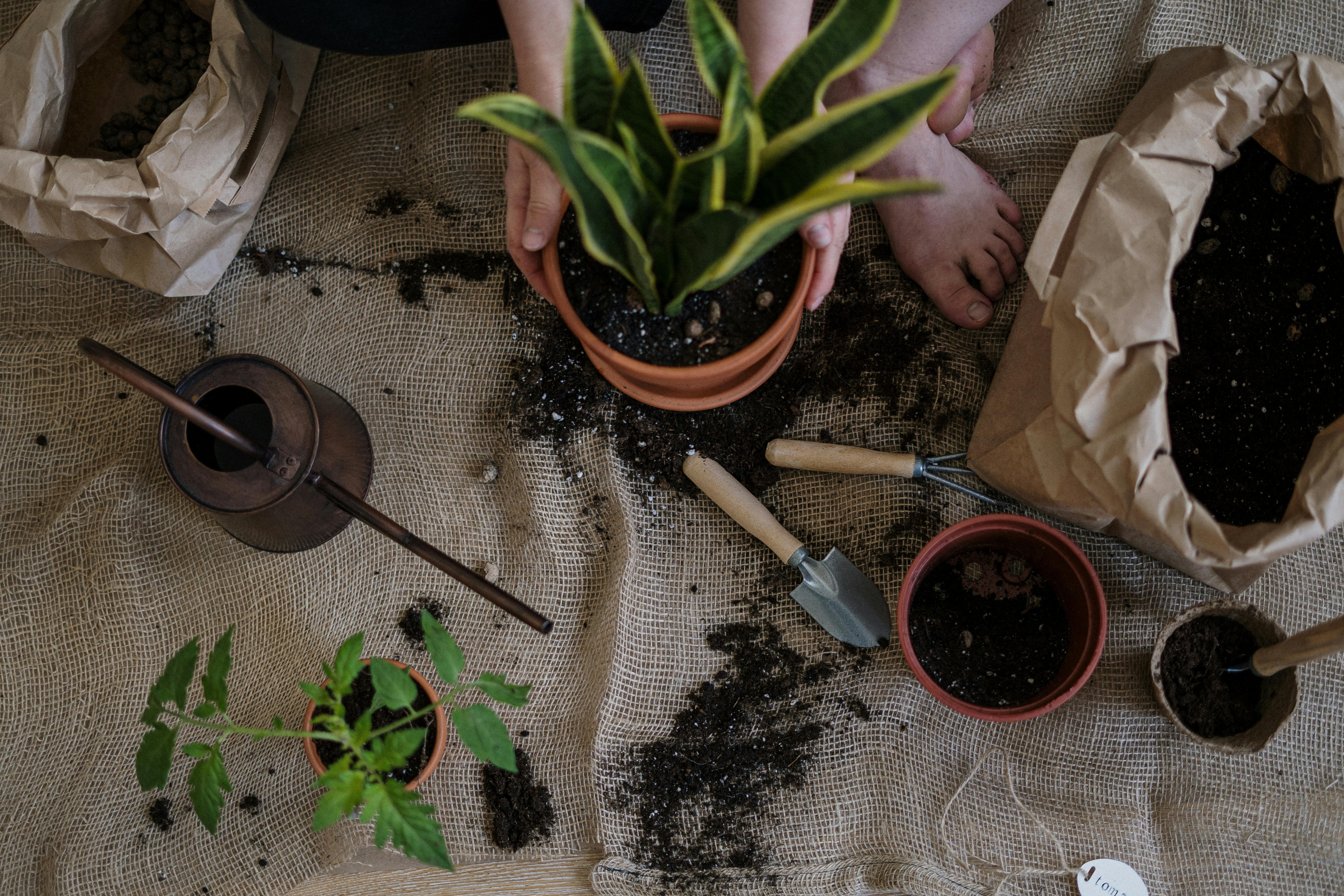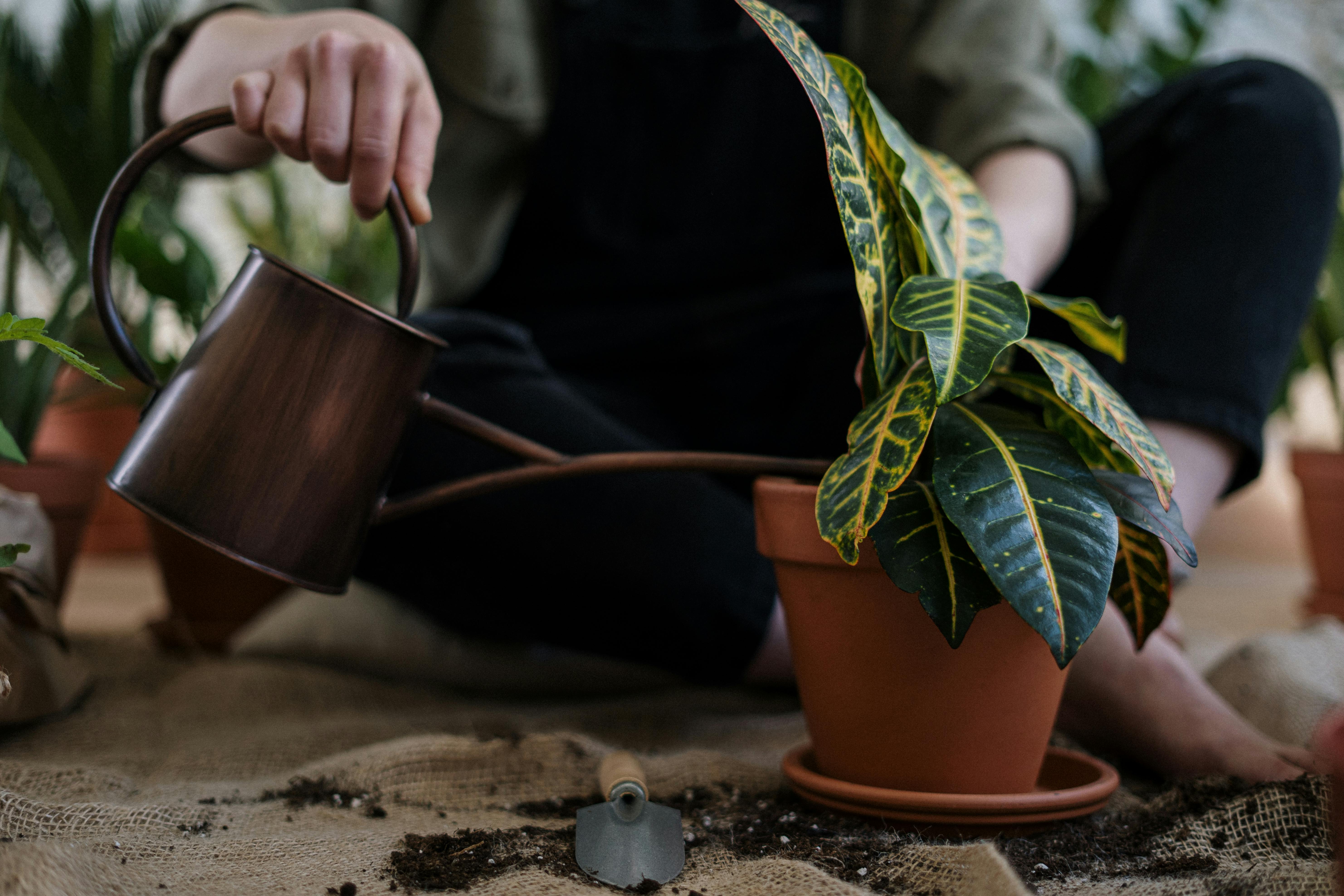Splitting a potted plant is a great way to propagate and grow more plants. It involves taking an already established plant, and dividing it into two or more parts. This process can be done with both indoor and outdoor plants, allowing you to share your current plant with others or to create multiple plants for yourself. Splitting a potted plant is relatively simple and requires minimal effort. In this article, we’ll discuss the basics of splitting a potted plant and provide some helpful tips on how to do it properly.Splitting a potted plant can be done by carefully removing the entire plant from its container and gently separating the root ball into two or more sections. Be sure to use a sharp knife or garden shears to make clean cuts, and wear gloves to protect your hands. After the separation is complete, repot each section in its own pot with fresh soil. Water each section thoroughly after planting.
Splitting A Potted Plant
When it comes to splitting a potted plant, there are several steps that need to be taken in order to ensure the health and safety of the plant. The first step is to remove the plant from its pot. Carefully lift the pot and gently shake it until the roots and soil are loosened. Then, use your fingers or a trowel to lightly loosen the roots. Once they are loose, carefully lift the plant from the pot and set it aside.
The next step is to divide the clump of roots into two or more sections using a sharp knife or spade. Try to make sure that each section has an even number of healthy-looking roots. When you have divided them, place each of the sections into new pots with soil that is well-draining and nutrient-rich.
Finally, water each of the new plants thoroughly after planting them in their new pots. Make sure that each plant has enough space around it so that its root system can grow properly, as overcrowding can lead to stunted growth or other problems with the plants’ health. With these steps, you will be able to successfully split a potted plant for further growth and development.
Tools Needed to Split a Potted Plant
Splitting a potted plant is an easy and effective way to propagate more plants from the original. It is also a great way to share your plants with family and friends. To do this, you will need some basic tools to help you out. These include gloves, pruning shears or scissors, a trowel or spade, and some potting medium.
Gloves are important when it comes to handling the plant so that you don’t damage it or get any type of skin irritation from the leaves or stems. Pruning shears or scissors are needed to cut through the roots and stems of the plant in order to divide it. A trowel or spade can be used to dig around the roots of the plant so that they can be separated easily. Lastly, potting medium is needed in order to replant each divided portion of the plant into separate pots.
With these tools on hand, splitting a potted plant can be done in no time at all. It is important to remember that when splitting a potted plant, you should be gentle and careful not to damage any part of it as this could affect its health and growth potential. Also, make sure that each divided portion has enough soil and roots for it to survive in its new home.
Splitting a Potted Plant
Splitting a potted plant can be an effective way to propagate the plant and ensure a healthy future growth. Plants that are propagated through splitting are often more robust and vigorous than plants grown from seed, making it an ideal technique for propagating plants. Splitting also allows gardeners to share their plants with friends and family or to create new varieties of their favorite plants.
Process
The process of splitting a potted plant is relatively straightforward. First, the potted plant should be removed from its container and the roots carefully examined for any signs of disease or damage. Then, the root ball should be divided into two or more separate sections, with each section containing a portion of the original root system. Each section should then be planted in its own container with soil suitable for the type of plant being propagated.
Benefits
Splitting a potted plant offers several benefits to gardeners. It allows them to quickly and easily propagate their favorite plants without having to wait for seeds to germinate or cuttings to root. It also encourages better air circulation around the roots which can help reduce the risk of disease. Splitting also makes it easier for gardeners to share plants with friends and family or create new varieties of favorite plants by combining different characteristics from two different parent plants. Finally, it gives gardeners an opportunity to revive old, overgrown plants by giving them new life in fresh soil and containers.
Overall, splitting a potted plant can be an effective way for gardeners to propagate their favorite plants quickly and easily while creating new varieties or sharing with others.
What Type Of Soil Is Ideal For Splitting A Potted Plant?
Potted plants can be divided and repotted for propagating new plants, or simply for filling a pot with a larger number of plants. The type of soil needed for this process depends on the type of plant being divided. Generally, a soil that is loose and well-draining is ideal. This will allow the roots to spread easily and give the newly divided plants a better chance of survival. For cacti and succulents, use a gritty soil that has plenty of drainage. For other types of plants, use either potting mix or regular garden soil amended with sand or peat moss to help improve drainage and aeration.
When dividing potted plants, it is also important to consider the container size so that the newly divided plants have enough room to spread out their roots without becoming root bound again. If using regular garden soil, it should be sifted first to remove any rocks or debris before adding it to the pot. Additionally, adding fertilizer while planting can help give the new divisions a boost in growth.
Overall, when splitting potted plants it is important to choose a soil type that will provide good drainage and aeration for optimal growth. Loose soils are usually best for dividing potted plants, but depending on the type of plant you will need to adjust accordingly by adding amendments such as sand or peat moss for extra drainage and aeration benefits.

Preparing the Soil for Splitting a Potted Plant
When splitting a potted plant, it is important to ensure that the soil is properly prepared in order to ensure the health and success of the plant. The first step in preparing the soil is to make sure it is evenly moistened. This can be done by using a garden hose or watering can to evenly water the soil until it is damp but not overly saturated. Once the soil has been watered, it should be tilled and mixed with compost or other organic material. This will help provide nutrients for the plant and make sure that there are no lumps or clumps of soil that could inhibit root growth. Additionally, any large stones or other debris should be removed from the soil before splitting.
Once the soil has been properly prepared, it should be gently loosened around the edges of the pot with a hand trowel before attempting to split it. It may also be necessary to use a hand saw in order to carefully cut through any roots that may have grown too large for manual removal with just a trowel. After all of this has been done, it will then be possible to carefully divide up the potted plant into two or more sections depending on its size and type.
Splitting up potted plants can be an effective way of propagating them as well as controlling their size and shape if done properly. By taking care to properly prepare the soil beforehand, you can help ensure that your plants will have a healthy start and will thrive for years to come.
Split Potted Plant Care
When caring for a split potted plant, it is important to remember the basics of plant care and then adjust them to the specific needs of the plant. Watering and light levels are two of the most important elements when it comes to caring for a split potted plant. The soil should be kept moist, but not soggy, and the light levels should be adjusted depending on the type of plant you have. Additionally, fertilizing may be necessary for optimal growth.
When watering your split potted plant, be sure to water it evenly between all sections. The soil should remain moist but not overly wet; if you notice that one section is wetter than others, adjust your watering schedule accordingly. To ensure that your plants get enough light, it is important to rotate them regularly so that all sections get equal exposure to sunlight or artificial light.
Fertilizing can also help promote healthy growth in your split potted plants; however, it is important to use a fertilizer specifically formulated for container plants. Additionally, avoid over-fertilizing as this can cause salt buildup in the soil which can harm your plants and inhibit their growth.
Lastly, be sure to monitor your split potted plant’s health regularly; if you notice any signs of over- or under-watering or changes in growth habits, address them immediately as this could indicate an underlying issue with your plant’s health. With these tips in mind, you can ensure that your split potted plants stay healthy and thrive!
What Is The Best Time Of Year To Split A Potted Plant?
Splitting a potted plant is a great way to propagate new plants, and it can be done at any time of year. However, the best time to split a potted plant is late winter or early spring. This is when the plant has a longer period of dormancy and will be less stressed by the process. When splitting a potted plant, make sure to remove all dead or diseased parts from the original rootball before replanting. Additionally, make sure that each part of the split rootball has at least one stem and some healthy roots attached. This will ensure that the new plants are able to grow well once they are transplanted.
It is important to note that different plants have different needs when it comes to splitting them. Some plants may need more water or more light than others, so research your specific type of plant before attempting to split it. Additionally, make sure to give any newly divided plants extra attention for at least several weeks in order to help them adjust and become established in their new environment.

Conclusion
Splitting a potted plant can be a great way to increase the size of your garden. It is also an inexpensive way to propagate more plants. However, it is important to remember that not all plants can be split and some may not survive the process. Before attempting to split a potted plant, it is best to research the particular species and understand the proper technique for splitting it. With proper care and attention, you can successfully split your potted plants and enjoy your expanded garden!

